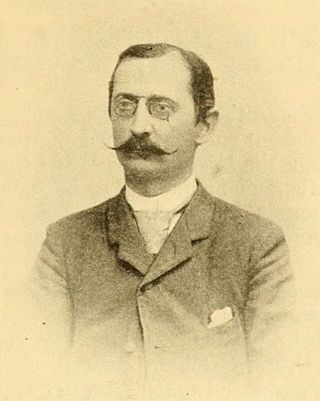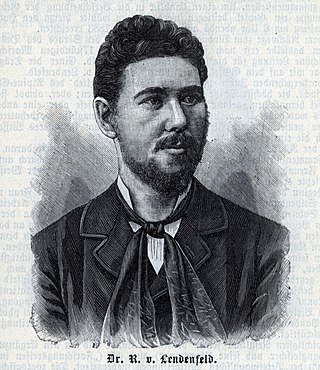Related Research Articles

Karl Hermann Johannes Thiele was a German zoologist specialized in malacology. Thiele was born in Goldap, East Prussia. His Handbuch der systematischen Weichtierkunde is a standard work. From 1904 until his retirement in 1925 he was the curator of the malacological collection at the Museum für Naturkunde in Berlin. Thiele described more than 1.500 new species of molluscs; until today their types are deposited with the Museum of Natural History in Berlin. Especially important are his works on the Mollusca of the First German Antarctica Expedition and of the German Deep Sea Expedition aboard the vessel Valdivia.

Heinrich Georg Bronn was a German geologist and paleontologist. He was the first to translate Charles Darwin's On the Origin of Species into German in 1860, although not without introducing his own interpretations, as also a chapter critiquing the work.

Eduard von Martens also known as Carl or Karl Eduard von Martens, was a German zoologist.
The Austrian expedition to Brazil was a scientific expedition which explored Brazil. It was organized and financed by the Austrian Empire from 1817 to 1835.

Willy Georg Kükenthal was a German zoologist. He was the older brother of botanist and theologian Georg Kükenthal (1864–1955). Kükenthal specialized in the Octocorallia and on marine mammals. He edited, along with Thilo Krumbach, a landmark series of eight volumes in the Handbuch der Zoologie series which extensively reviewed and compiled the state of zoological knowledge of the time.

Heinrich Rudolf Simroth, was a German zoologist and malacologist. He was a professor of zoology in Leipzig.

Carl Heinrich Apstein was a German zoologist and botanist. The standard author abbreviation Apstein is used to indicate this person as the author when citing a botanical name.

Ernst Vanhöffen was a German zoologist.
Cura pinguis is a species of dugesiid triclad found in Australia and New Zealand.
Hugo Merton was a German zoologist.

Jujubinus polychromus is a species of sea snail, a marine gastropod mollusk in the family Trochidae, the top snails.
Oswald Seeliger was a German zoologist, known for his studies involving the anatomy and developmental history of tunicates.

Robert J. Lendlmayer von Lendenfeld (1858-1913) was an Austrian zoologist, alpinist, and traveler. He was also a notable spongiologist.
The robust striped gecko, also known commonly as Michaelsen's spiny-tailed gecko, is a species of lizard in the family Diplodactylidae. The species is endemic to Australia.
The Institut für Meereskunde in Kiel, Germany, existed from April 1, 1937 to January 1, 2004. It was an essential element of the long history of marine sciences in Kiel. This history started with the work of Samuel Reyher published in 1697 and is today continued within the GEOMAR Helmholtz Centre for Ocean Research Kiel.

Pachydactylus capensis, also known as Cape gecko or Cape thick-toed gecko, is a species of lizard in the family Gekkonidae. It is found in southern Africa.
Proshermacha is a genus of mygalomorph spiders in the family Anamidae, first described by Eugène Simon in 1908.
Leonhard Schultze-Jena was a German explorer, zoologist, and anthropologist known for his explorations of German Southwest Africa and New Guinea, as well as for his studies on Mesoamerican languages.

Cystiscus cymbalum is a species of very small sea snail, a marine gastropod mollusk or micromollusk in the family Cystiscidae.
References
- 1 2 Hartmeyer, Heinrich Robert Hermann In: Neue Deutsche Biographie (NDB). Band 8, Duncker & Humblot, Berlin 1969, ISBN 3-428-00189-3, S. 6 f.